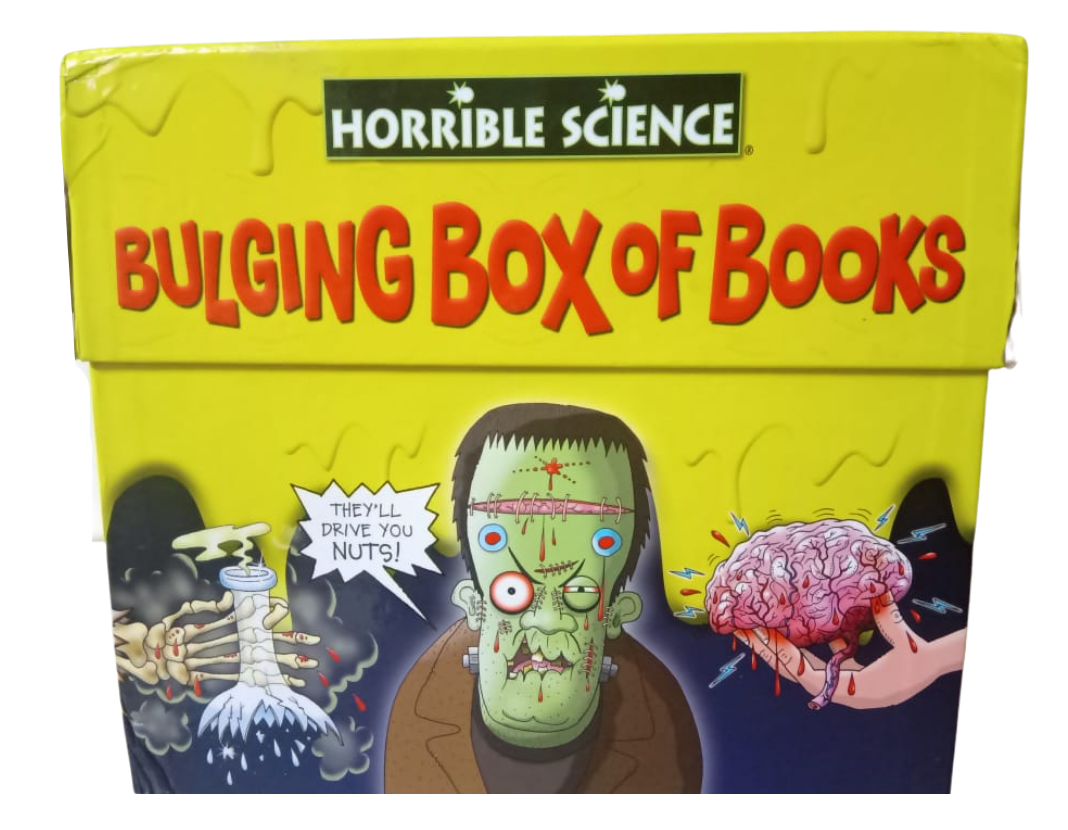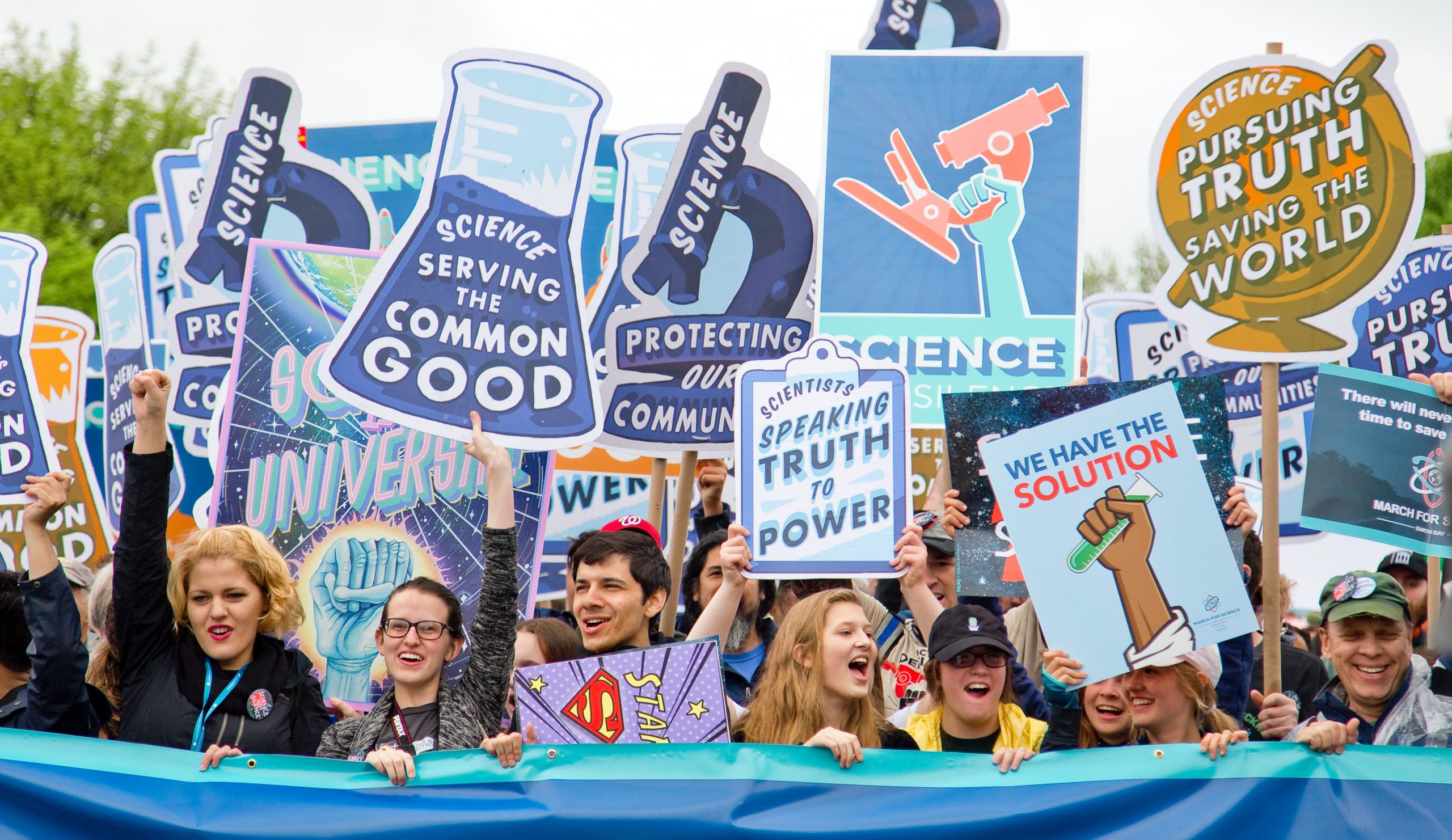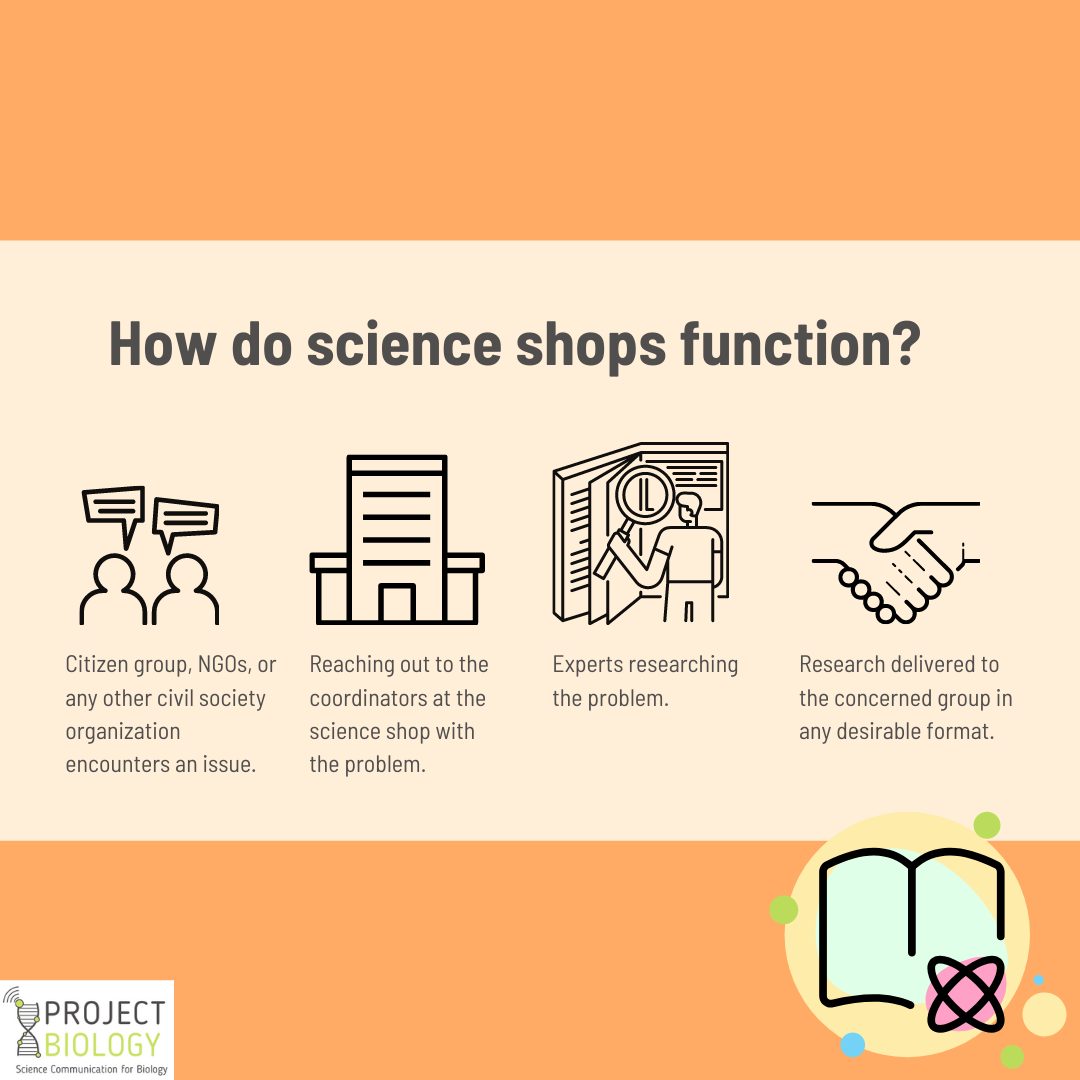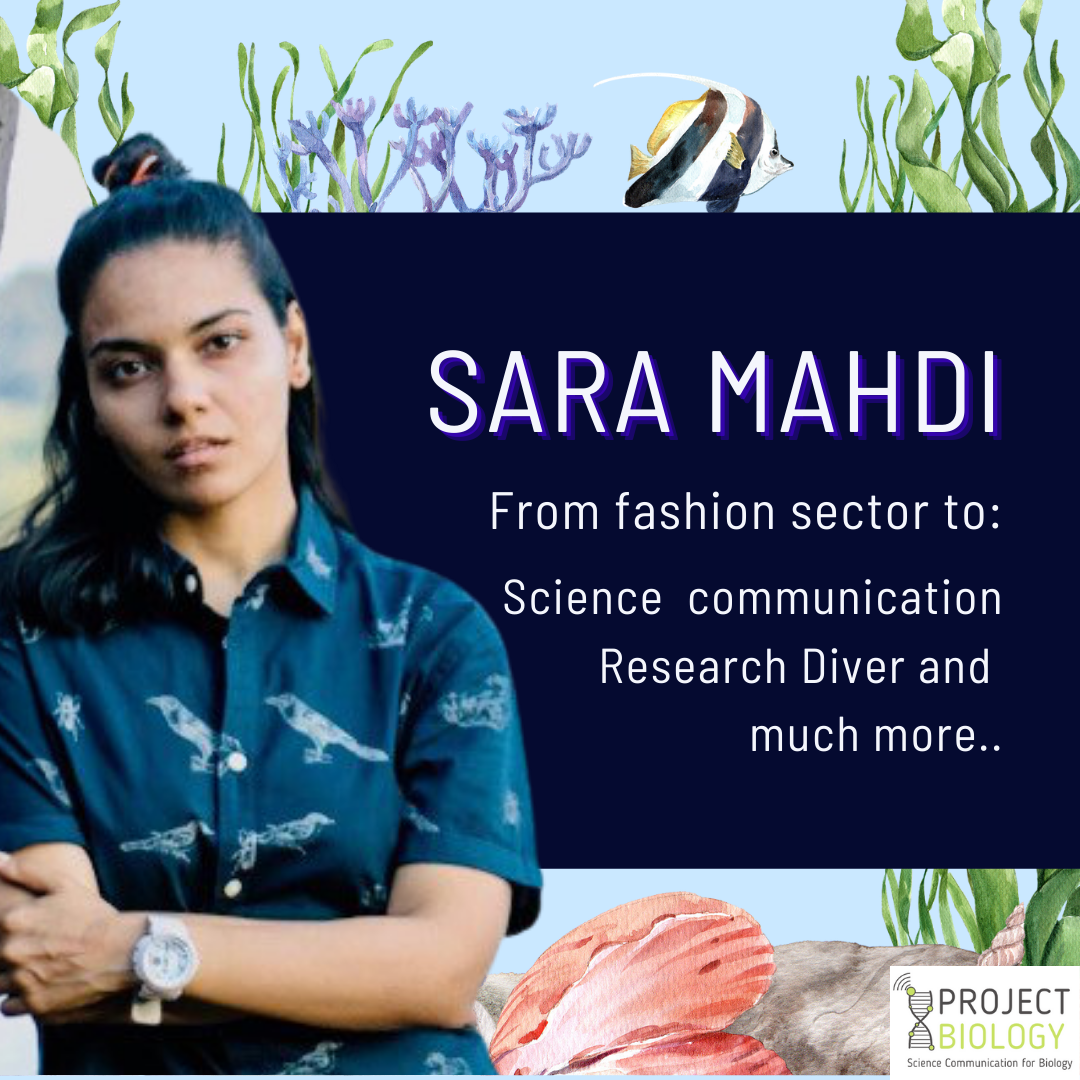Stories of science often gleam with grandeur and sophistication, the test tube babies, CRISPR technology, double-helix DNA, and more. By contrast, another reality of science starts at the darkest, creepiest, and horrible nooks and crannies of the world. Within these hidden allies, science has some really horrible secrets that make our world work. Don’t worry; we are not talking about conspiracy theories.
We are talking about stories from the back alleys of science that connect the city but are often avoided—grotesque details of the darkest and scariest aspects of our worlds and their timeline. And we found just the thing for you to read. We found the beautiful box of Horrible Science series by Nick Arnold, brought to life with the help of illustrations from Tony De Saulles. 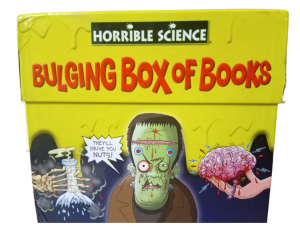
The 20 books in the boxset are less of theoretical textbooks and more targeted at teaching children by harnessing their curiosity. They cater to the fascination of children towards the grotesque and tend to incline them towards the wonders of science.
For example:
What comes to your mind when you think about the achievements in the area of public health? You would bring up the discovery of vaccines and antibiotics. But if you had grown up with the ‘Horrible Science” books, you would have many more interesting and nasty stories to tell. You could also go back to the beginning of it when microbes were discovered as the cause of illnesses.
Here’s another one:
You must know that humans so shed skin cells. But have you been reading one of the Horrible Science titles, you would have had known that men are dirtier than women. Now, don’t get offended, but they actually take lees baths than women, so they shed skin cells 5 times more.
In his own words, the creator Nick Arnold intended the books to highlight the wonders of the world of science. His series covers topics from the human body, the natural world, disciplines of chemistry, microbiology, and more. The topics are communicated through catchy titles like Painful Poison, Chemical Chaos, Nasty nature, Evil Inventions, Deadly Diseases, Space, Stars, and Slimy Aliens, and Fatal Forces. 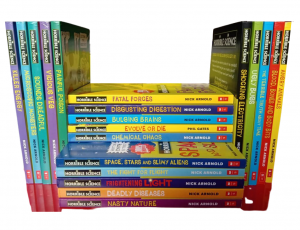
Diving into these fun reads makes the reader learn about poisonous living organisms, baffling brains, gruesome guts, alchemy, crazy cars, the atom bomb, and much more horrible science stuff. The reader will embark on a journey through some of the most harrowing ancient medicinal practices to the current advances of modern medicine. It will also reveal the hidden secrets of the scary elements of nature hidden everywhere around us.
These diverse topics are a mix of basic theories and engaging trivia. The books’ structure elevates them from the conventional style of textbook teaching. They explore the journey of each discipline from its genesis to its current role in the world. It also provides pronunciation aides to help spell those arduous science terms one would find themselves jumbled with, like the word eppy-deem-me-ol-lo-gist, everyone is saying a lot these days. (To those reading the article some time in the distant future, we faced a pandemic onward 2020).
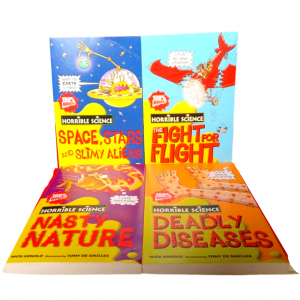 The writer utilizes fun-filled insights, exciting facts, questionnaires, and self-check to teach about discoveries and prominent figures from different fields. He shares with his curious readers fact files and encourages them to responsibly and safely perform experiments in the “Dare you discover” segment. There are important warning signs for curious explorers for the assurance of adults that none of these experiments would lead to a visit to a professional of any capacity.
The writer utilizes fun-filled insights, exciting facts, questionnaires, and self-check to teach about discoveries and prominent figures from different fields. He shares with his curious readers fact files and encourages them to responsibly and safely perform experiments in the “Dare you discover” segment. There are important warning signs for curious explorers for the assurance of adults that none of these experiments would lead to a visit to a professional of any capacity.
As an added point of fun (for children, not educators), the reader will always find a pun about their teachers in the books. (Do not make puns in the classroom, kids.) No disrespect, just acceptance of the crazy theories children think up about their teachers, and no teachers are not space aliens on earth to eat brains.
And as anyone will expect, the series has been well received for its unique narrative style. Arnold is the first children’s author to receive the Thomson Reuters Record Award for Communicating Science by the Zoological Society of London for the public communication of zoology. The prize was awarded to Wasted world, a title that explored issues of the changing climates and it’s implications on the world.
The series has also received awards in the science book prize categories for many years. The books saw adaption into magazines, a 2015 mini TV series, and other forms of interactive literature. If you find yourself interested in celebrating science in all its creepy, nasty, and fascinating glory, you can dive into the horrible science series. It will let you explore the scary, murderous magical microbes or go through friction, speed, gravity, and mighty machines.
